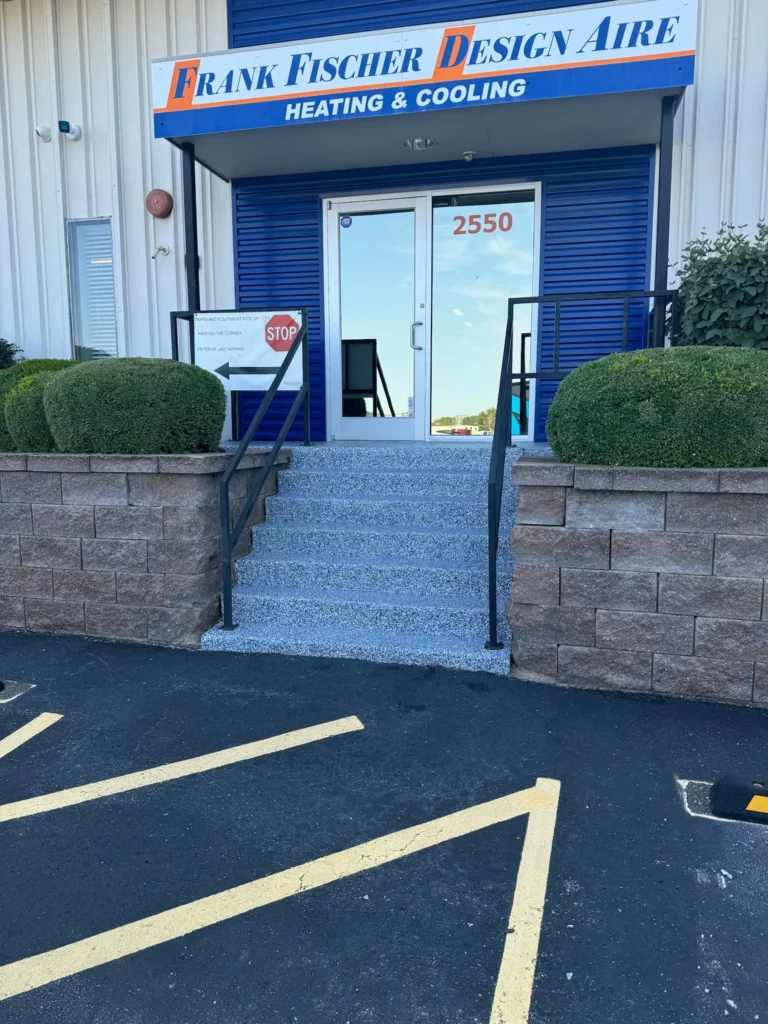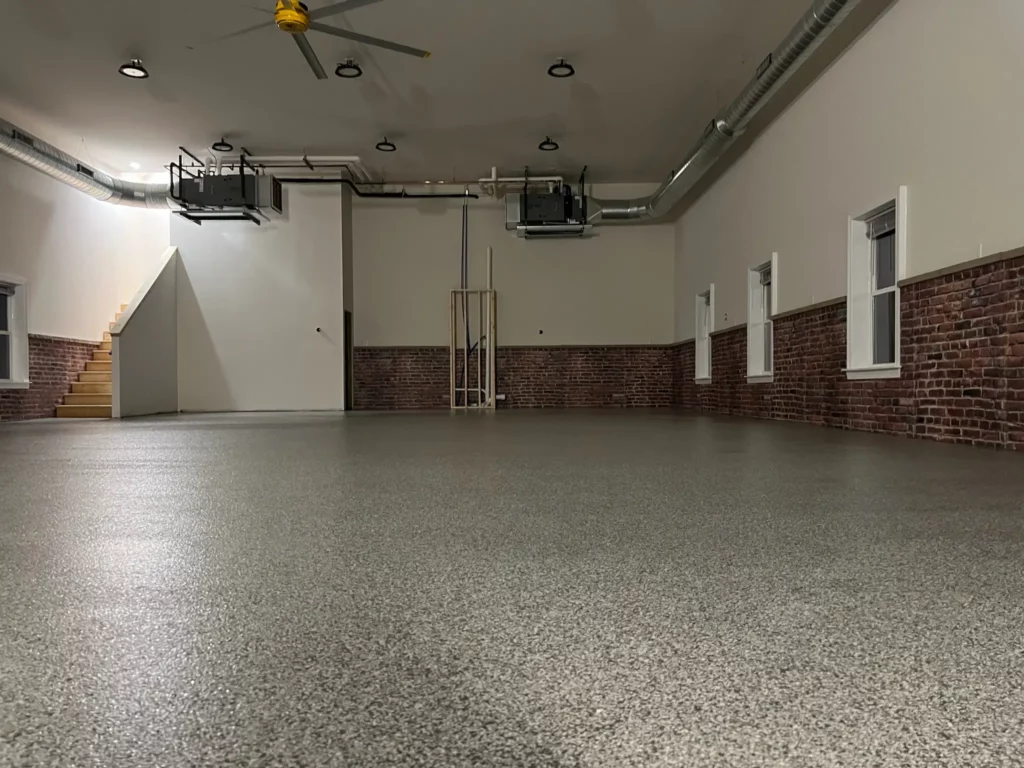When it comes to commercial flooring, two heavyweights dominate the conversation: Epoxy vs. polished concrete for commercial spaces. Both offer durability, aesthetics, and cost-effectiveness, but which one is right for your business? The answer depends on factors like foot traffic, maintenance expectations, and the overall vibe you want your space to have.
Before we break down the pros and cons of each option, if you’re considering commercial flooring in St. Louis, STL Coatings has expert resources to help you make an informed decision. Now, let’s compare these two flooring solutions to see which is the best fit for your industry.
What is Epoxy Flooring?
Epoxy flooring is a resin-based coating applied over concrete to create a seamless, durable, and chemical-resistant surface. It’s commonly used in warehouses, garages, hospitals, and industrial spaces due to its strength and easy maintenance. Epoxy can also be customized with colors, textures, and anti-slip additives.
What is Polished Concrete?
Polished concrete, on the other hand, enhances an existing concrete slab by grinding and polishing it to a smooth, glossy finish. It doesn’t require coatings or additional materials beyond densifiers and sealers. Polished concrete is popular in retail stores, showrooms, and office spaces for its sleek, modern look and low maintenance needs.

Epoxy vs. Polished Concrete – Breaking Down the Pros and Cons
1. Durability and Longevity
- Epoxy Flooring: Highly resistant to impact, chemicals, and abrasions. It’s ideal for heavy-duty environments like factories and hospitals where spills and machinery are common. With proper maintenance, epoxy flooring can last 5-10 years before needing a refresh.
- Polished Concrete: Extremely long-lasting, with a lifespan of 20+ years if maintained properly. However, while it’s durable, it can still be prone to chipping and staining in high-impact areas.
Winner: Polished concrete for longevity, epoxy for impact resistance.
2. Maintenance Requirements
- Epoxy Flooring: Requires occasional reapplication of topcoats, especially in high-traffic areas. Cleaning is easy with mild detergents, and the seamless surface prevents dirt buildup.
- Polished Concrete: Extremely low-maintenance. Regular sweeping and occasional damp mopping keep it looking fresh. However, it can develop stains if spills aren’t cleaned quickly.
Winner: Polished concrete for lower maintenance, epoxy for stain resistance.
3. Aesthetic Appeal and Customization
- Epoxy Flooring: Available in a variety of colors, textures, and finishes, including metallic and decorative flake systems. Perfect for businesses that want a customized look.
- Polished Concrete: Provides a sleek, industrial aesthetic with a glossy sheen. While it doesn’t offer as many customization options, it pairs well with modern, high-end designs.
Winner: Epoxy for versatility, polished concrete for a minimalist look.
4. Cost Considerations
- Epoxy Flooring: Generally more affordable upfront, but may require reapplication over time, increasing long-term costs.
- Polished Concrete: Higher initial cost due to labor-intensive grinding and polishing, but lower long-term maintenance costs.
Winner: Epoxy for lower initial costs, polished concrete for long-term savings.
5. Slip Resistance and Safety
- Epoxy Flooring: Can become slippery when wet but can be modified with anti-slip additives for enhanced safety.
- Polished Concrete: Naturally slip-resistant when dry but can be very slick when wet, requiring the application of sealers or mats in certain areas.
Winner: Epoxy with anti-slip additives for safety, polished concrete for dry environments.
6. Best Industries for Each Flooring Type
- Epoxy Flooring is best for:
- Warehouses and industrial spaces
- Hospitals and medical facilities
- Commercial kitchens and food production areas
- Auto shops and garages
- High-traffic retail stores
- Polished Concrete is best for:
- Showrooms and upscale retail spaces
- Office buildings
- Restaurants and cafes
- Museums and art galleries
- Hotels and lobby areas

Choosing the Right Flooring for Your Business
The choice between epoxy and polished concrete often comes down to the specific needs of your business. If you’re dealing with chemicals, heavy machinery, or potential spills, epoxy flooring is likely the better choice. If you’re looking for a long-lasting, stylish surface with minimal upkeep, polished concrete might be the way to go.
At the end of the day, finding the right flooring is a lot like planning the perfect visit to the St. Louis Zoo—you need to consider durability (can it handle a crowd?), maintenance (who wants to clean up constantly?), and the overall experience (does it leave a lasting impression?). Just like how you wouldn’t want to wear dress shoes to walk around the zoo all day, you wouldn’t want the wrong flooring for your business. If you need a break from flooring decisions and want to explore something a little more wild, you can check out everything the zoo has to offer here.
Final Thoughts
Both epoxy and polished concrete offer incredible benefits for commercial spaces in St. Louis. Your choice depends on durability needs, maintenance preferences, and the overall aesthetic you’re going for.
If you’re still unsure which option is best for your business, STL Coatings can provide expert guidance and installation services to ensure you get the perfect flooring solution.
No matter which flooring you choose, investing in a high-quality surface will keep your business running smoothly—just like a well-planned visit to the zoo.
